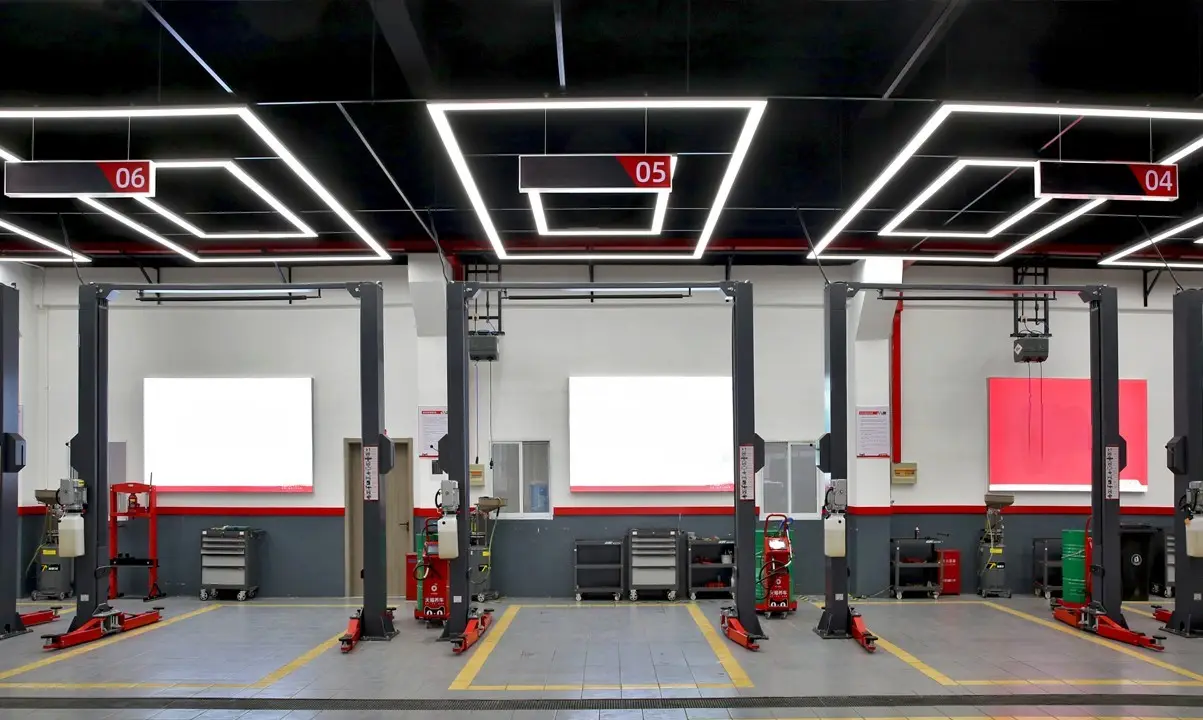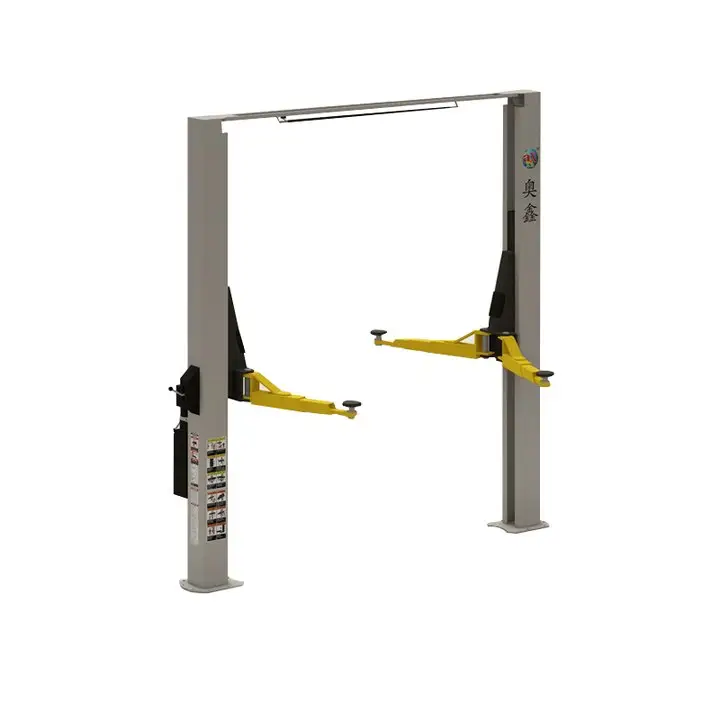Enhancing Operational Efficiency in Auto Repair Shops
Auto repair facilities are built around productivity and precision, where the efficiency of tools and systems directly impacts service quality. Among the many critical tools in a professional garage, the hydraulic car lift stands out as one of the most essential components. With their powerful lifting capabilities and ergonomic advantages, these lifts streamline daily operations in ways that no manual method can replicate. Choosing a hydraulic car lift is more than a convenience—it's a foundational decision that influences workflow, safety, and service turnaround time.
Practical Functionality in Automotive Workspaces
Simplified Vehicle Access
One of the most obvious reasons for the popularity of hydraulic car lift systems in auto shops is the ease with which they allow mechanics to access a vehicle's underside. Tasks like oil changes, transmission work, and exhaust system repairs become more manageable with a hydraulic car lift, as technicians can work at comfortable heights without crawling underneath the car. This improves ergonomics and reduces strain, contributing to a safer work environment.
Time-Saving Mechanisms
Speed is a critical factor in the automotive service industry. Hydraulic car lift systems reduce setup time dramatically compared to jacks and stands. The lift can raise or lower a vehicle in seconds, allowing for rapid transitions between inspection, repair, and testing. With fewer interruptions and faster access to components, shops can handle more vehicles daily without sacrificing quality or safety.
Enhanced Safety for Technicians
Stable Load Handling
Hydraulic car lift designs prioritize safety with load-distribution features and mechanical locking systems. These systems hold vehicles in place with unmatched stability, minimizing the risks associated with slippage or uneven weight distribution. When lifts are used correctly and regularly maintained, the chances of accidents or equipment failure are significantly reduced.
Ergonomic Advantages
Lifting heavy vehicles manually or working at ground level can lead to fatigue, injury, and long-term health issues. Hydraulic car lift systems allow workers to adjust the height of the vehicle to a level that suits their working posture. This reduces physical stress, enhances precision in task execution, and improves overall job satisfaction for mechanics and technicians.
Supporting a Wide Range of Services
Versatility Across Vehicle Types
Not all cars are created equal, and hydraulic car lift systems accommodate this reality. Whether a shop services compact sedans, large SUVs, or commercial vans, a high-quality hydraulic lift can handle the varying weights and sizes. This versatility allows auto shops to broaden their service capabilities without investing in multiple types of lifting equipment.
Integration with Diagnostic Tools
Modern diagnostic procedures often require precise access to various parts of the vehicle. A hydraulic car lift enables easy integration with inspection equipment and alignment systems. With better access and visibility, technicians can carry out more accurate diagnostics, leading to more effective repairs and satisfied customers.

Cost-Efficiency in Long-Term Use
Reduced Labor Costs
Because hydraulic car lift systems enhance the speed and accuracy of mechanical work, shops can complete more jobs in less time. This increase in productivity directly reduces labor costs per service. Mechanics spend less time on repetitive or physically demanding lifting tasks and more time on actual diagnostics and repairs.
Low Maintenance Requirements
Well-constructed hydraulic car lift systems are built to last and require minimal upkeep. Routine inspections and occasional part replacements are usually all that's needed to keep the lift functioning smoothly. Their durability makes them a cost-effective solution for busy automotive environments, saving money over time.
Professional Image and Customer Trust
Clean and Organized Work Areas
Customers often judge an auto shop by its appearance. The use of hydraulic car lift systems contributes to a more organized and professional-looking workspace. With fewer tools on the floor and vehicles elevated neatly, the shop appears more trustworthy and efficient, positively impacting customer perception.
Improved Service Transparency
When customers can visually see their cars being elevated for inspection or repair, it adds a layer of transparency to the service process. This builds confidence and trust, especially when the technician walks them through the process. A hydraulic car lift offers both a practical and psychological benefit in this respect.
Flexibility for Shop Layout and Workflow
Space Optimization
Many hydraulic car lift systems are designed with space-saving features, allowing auto shops to maximize their square footage. Some models can be recessed into the floor or rolled away when not in use, creating a more dynamic and flexible workspace. This adaptability is especially beneficial for smaller or multi-purpose garages.
Scalable for Growth
As businesses grow, their equipment must keep up with increasing demands. Hydraulic car lift systems can be scaled to suit changing needs. Whether it's adding more lifts or upgrading to higher-capacity models, shops can expand operations without needing a full overhaul of their existing infrastructure.
Technological Advancements and Innovation
Integration with Smart Systems
Today's hydraulic car lift designs often include smart features such as automated controls, remote monitoring, and programmable lifting heights. These technologies improve operational efficiency and allow technicians to maintain focus on high-skill tasks, rather than manual adjustments. They also help ensure consistency in lift performance, which is critical for complex or multi-step repairs.
Enhanced Durability and Materials
Modern hydraulic car lift systems are constructed using high-strength steel and corrosion-resistant coatings. These innovations improve the lifespan of the equipment, making them more reliable even under heavy use. The improved durability ensures that shops can maintain high service standards over extended periods.
Environmental and Regulatory Considerations
Energy Efficiency
Some hydraulic car lift systems are designed to be energy-efficient, using less hydraulic fluid or employing air-hydraulic combinations. This not only lowers operational costs but also supports eco-conscious practices in the garage environment. With increasing focus on sustainability, energy-efficient lifts can be a strong asset.
Compliance with Safety Standards
Hydraulic car lift systems are subject to various safety and construction standards, including those established by industry regulators. High-quality lifts are built with these standards in mind, ensuring that auto shops remain compliant and avoid penalties or work stoppages due to non-conforming equipment.
Competitive Advantage in a Crowded Market
Faster Turnaround Times
In competitive markets, turnaround time can be a deciding factor for customers. With hydraulic car lift systems enhancing speed and service reliability, auto shops gain a notable edge. Being able to deliver high-quality service faster than competitors attracts more clients and builds a strong reputation.
Differentiation Through Professionalism
While many garages rely on basic lifting tools, shops that invest in hydraulic car lift systems demonstrate a higher level of professionalism. This differentiation can be highlighted in marketing and customer interactions, positioning the business as a more advanced, customer-centric option.
FAQ
How does a hydraulic car lift improve technician safety?
A hydraulic car lift allows for stable, adjustable elevation of vehicles, reducing strain on technicians and lowering the risk of injuries caused by awkward positions or heavy lifting.
Are hydraulic car lift systems difficult to maintain?
Most hydraulic car lift systems require minimal maintenance, including regular inspections and occasional part replacements. Their design prioritizes durability and low upkeep.
Can a hydraulic car lift be used for all types of vehicles?
Yes, many hydraulic car lift systems are built to handle a wide range of vehicle sizes and weights, including sedans, SUVs, and light trucks, making them ideal for diverse service needs.
What are the cost benefits of using a hydraulic car lift?
The initial investment is offset by long-term savings in labor, time, and maintenance. Shops can increase productivity, complete more jobs, and reduce technician fatigue, leading to better profitability.
Table of Contents
- Enhancing Operational Efficiency in Auto Repair Shops
- Practical Functionality in Automotive Workspaces
- Enhanced Safety for Technicians
- Supporting a Wide Range of Services
- Cost-Efficiency in Long-Term Use
- Professional Image and Customer Trust
- Flexibility for Shop Layout and Workflow
- Technological Advancements and Innovation
- Environmental and Regulatory Considerations
- Competitive Advantage in a Crowded Market
- FAQ

